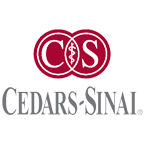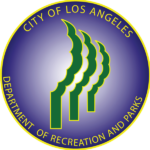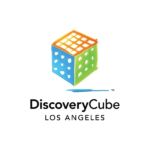Game On: Inspiring a Healthy L.A. for 2028
- Global Health
- Sustainable Development
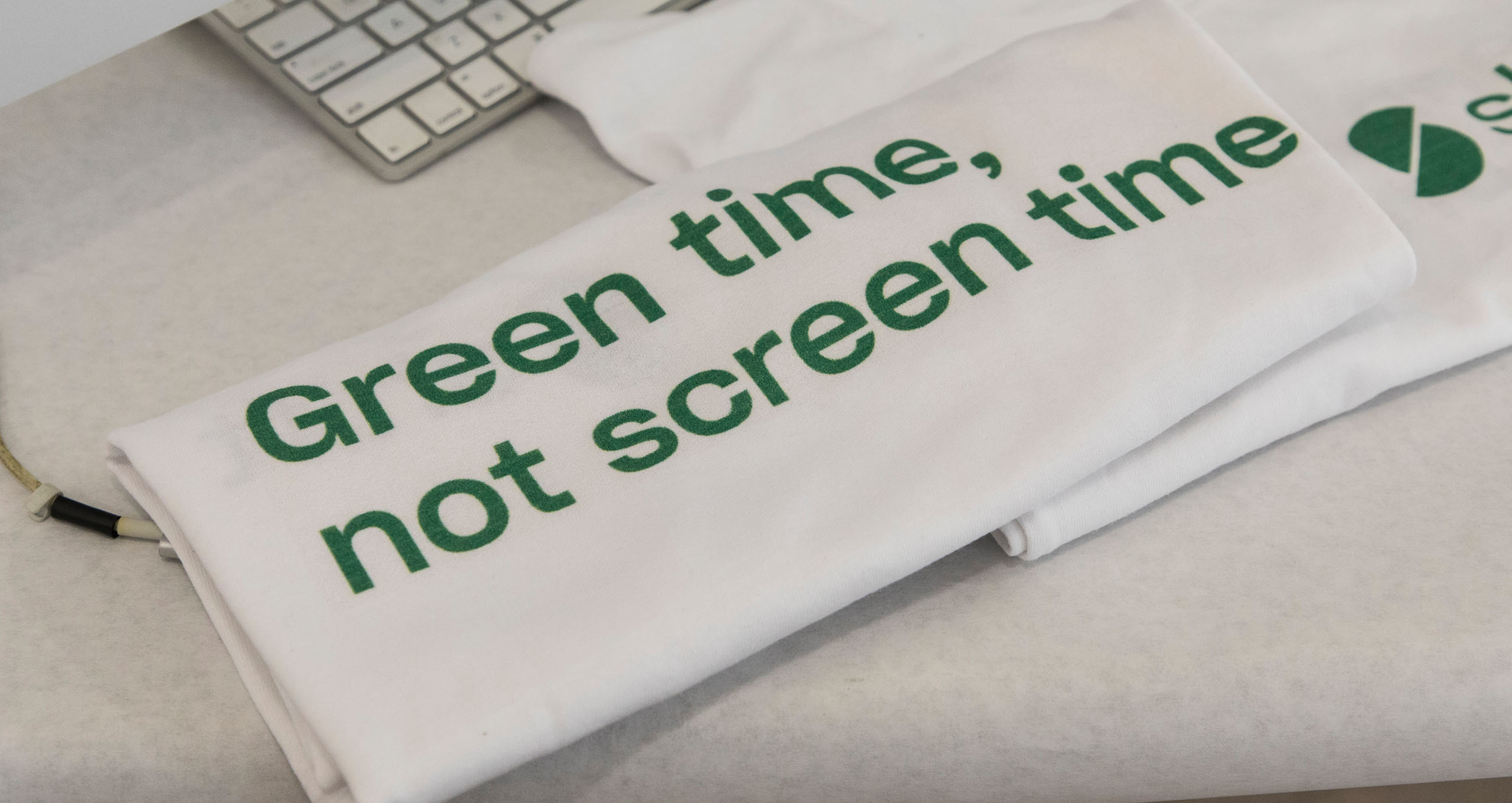
Spring 2019
In partnership with Cedars-Sinai Research Center for Health Equity, this Designmatters studio challenged ArtCenter students to explore the role of technology in a city-wide health initiative to create a culture of healthy, active and engaged communities for all residents of Los Angeles. Students developed apps as well as other technology-based and low-tech solutions for multiple interventions that also integrated outcomes for stakeholders with the Los Angeles Department of Recreation and Parks (RAP), Discovery Science Cube Los Angeles and Garmin International.
Project brief
ArtCenter students where challenged to develop digital ecosystems, including apps and low-tech solutions, to engage Angelenos in a city-wide health initiative to increase their physical activity and participate in their communities, while assisting Cedars-Sinai researchers in gathering health data in a way that is not burdensome to participants. Students also considered how their design could integrate additional project stakeholders partnering on the initiative: the Los Angeles Department of Recreation and Parks (RAP), Discovery Science Cube Los Angeles and Garmin International.
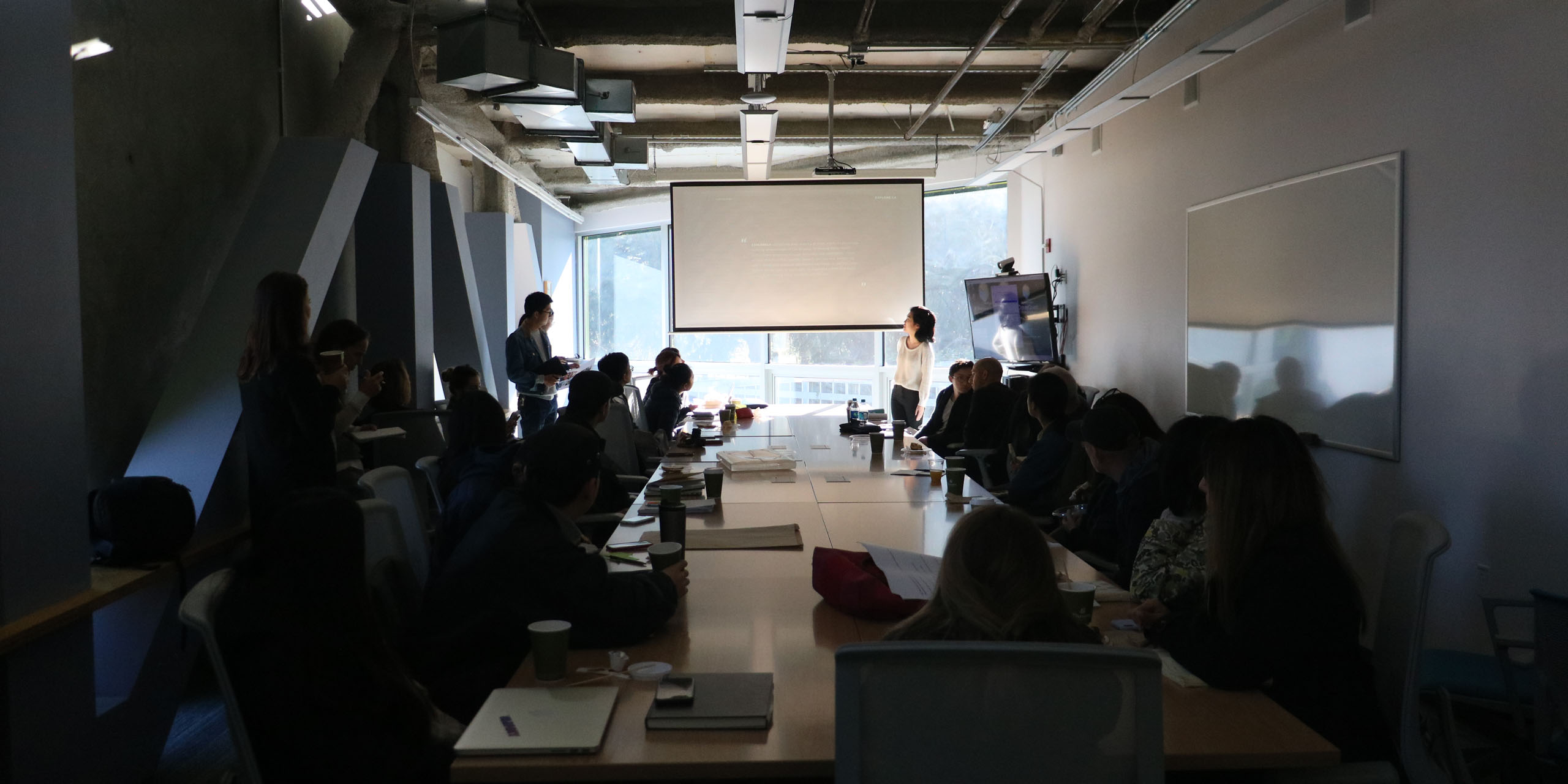
“The students needed to consider all the stakeholders and all complications, as well as developing their own strategic vision. They needed to see how their concepts can be a reality today with existing devices and technologies, and how that idea can slowly transition up in scale to a future scenario.”
– Krystina Castella, Professor, ArtCenter
About Cedars Sinai Research Center for Health Equity
The Cedars-Sinai Research Center for Health Equity addresses the inequalities that exist in the Los Angeles County’s underserved communities through research, service and policy on local and state levels.
Developed as part of the Samuel Oschin Comprehensive Cancer Institute at Cedars-Sinai, the Center encompasses a wide range of research from molecular/genetic to behavioral and research-driven community outreach and engagement (COE). The Center has established partnerships with many diverse Los Angeles area community organizations and collects research at the state, national and international levels.
COE efforts focus on compliance with cancer screening guidelines and major behavioral and lifestyle factors including physical activity levels, cigarette smoking habits and access to the latest and most accurate cancer information.

“We had to consider all the stakeholders as we designed and the feasibility of our concepts and how they would play in the real world. That was an enormous challenge. We had to realize our concepts in a more realistic way.”
– Aron Park, Student, Product Design
Research and Project Development
Prior to start of the studio, students examined their own personal connections to physical movement and scrutinized factors that have motivated them to be physically active as well as what inhibits them from participation. Students also researched existing technologies and programs that promote health and fitness activities across a wide range of socio-economic communities.
Drawing upon these personal observations and research, students created mind maps that presented common insights, topics and 20 “Big Ideas” of potential solutions.
At the kickoff, students shared their mind maps and some “Big Ideas” with classmates and stakeholder representatives; this lively presentation set the stage for the studio which would emphasize strategic vision, conceptual opportunities, co-working sessions and different methods of brainstorming to achieve ideas with the most promise.
Representatives from Cedars-Sinai Research Center for Health Equality presented an overview of the importance of physical activities and active play. Students learned the challenge of the studio, which involved Cedars-Sinai researchers wanting to track and monitor physical activities (leveraging the Garmin partnership) as they engaged families and youth throughout the Los Angeles region, with special emphasis on programming at Los Angeles Department of Recreation and Parks (RAP) and Discovery Science Cube Los Angeles.
Using the instructor’s recently published books as reference – Castella’s Designing for Kids: Creating Playing, Learning and Growing and Boyl’s Interactions for Designers – students delved into the dynamics of the importance of physical movement for childhood development and the design nature of interaction.
A personal journal became a necessary and important item for each student; it became a method to sketch ideas, jot down concepts and record observations. Students were required to ideate two two-page spreads a day for five days a week during the course of the studio; journals were brought to each class for instructors to gauge a student’s progression.
The transdisciplinary students – from product, graphic and interaction – were divided into five teams during the first class. Groups chose an initial concept to explore. Teams conducted analysis of relevant trends, examined the competitive landscape and honed in on a potential target market. They conducted research and reached out to stakeholders who generously shared their own research findings.
Teams identified an intended audience and revealed possible pain points for those users. Developing a positioning statement, they created a set of design criteria along with a text scenario and personas. The teams defined the problem they were trying to solve and created smaller goals and objectives that would lead bring them closer to a workable solution.
Field Trips, On-Site Discoveries, Active Stakeholders
As a class – and later as teams – students visited RAP city parks and recreational centers in three diverse areas of Los Angeles. They interviewed park personnel, families who use the programs and youth who participate in sponsored events. Students observed the landscape of these parks, noting how the public interacts with the surroundings and the role the recreation center plays in connecting community members.
To augment their thinking, students attended an evening panel discussion on designing for children hosted by faculty Krystina Castella at the ArtCenter campus. Teams also learned about xD at a hands-on session with Adobe officials who demonstrated how to iterate and design using the program.
A field trip to the Discovery Science Cube Los Angeles provided students with a deeper understanding of how exhibit design produces valuable user experiences as well as the overall mission of the family-friendly destination.
While onsite, students presented their initial concepts to stakeholders. Through mood board posters, guidewords, a “day in the life” user’s journey, personas, and possible product names, students shared the results of their research findings, brainstorming sessions and design ideation.
Additionally, teams presented three approaches for their concept: a solution that could be implemented immediately – the “now” solution –, an advanced vision for five years out and a final strategy that could be rolled out in 2028 timed to correspond to the upcoming Summer Olympic Games that are being held in Los Angeles. Teams clearly communicated how each stakeholder would be involved in the project and outcomes.
Stakeholders asked questions, offered feedback and provided suggestions on how teams could move forward in their thinking and synthesizing.
As teams updated their strategic vision and roll-out approaches, they expanded their target audience to youth and families involved in the RAP programs. Research was ongoing, with teams forging deep connections to community, church groups and schools that already interface with RAP.
Since one goal of the design brief was to track specific active minutes that boost heartrate using accelerometers (in addition to tracking sedentary time periods), student teams researched wearable devices and other environmental design elements while diagraming the ecosystem for their device solution system. Incorporating gamification and/or making the experience fun and lively would present a friendlier and more accessible system to their target audience.
Teams sought how to leverage Garmin for the “now” solution, while exploring how their solution would scale up with different product runs of 5,000, 10,000 and the ultimate goal of 500,000.
Students explored materials and crafted rough mockups depicting form, function and physical consideration of their proposed wearable device. Teams shared testable prototypes with each other during class which further invigorated the students to press forward.
With an overreaching goal to attract 500,000 individuals to become more active, students realized their project needed to be a modular system that could be customizable – as well as adapting to a larger inclusive audience of different ages, backgrounds, ethnicities and abilities. Additionally, students had to consider how to attract and inspire users – especially tweens and teens – and keep them from participating once and then quitting.
The students realized that an engaged experience needed to be center front of their team’s design thinking; the stakeholder’s goal of collecting data would naturally follow.
Understanding that when system “nudges” an activity, it will have long-lasting success with users, students considered elements of pop-up promotions at regular locations (park gatherings, street fairs, etc.) as well as surprise events. Teams explored how to connect users at different locations with one another, offering award tokens, creating encouragement groups and other enticements.
At the official midterm, student teams presented an updated synopsis of their research along with inspirational boards, user scenarios, project rollout phases, and how each solution would scale up from the “now” to final overall strategy. Possible market messaging, refined guide words, and product names were also presented.
Once again, stakeholders offered constructive and supportive critique which pointed the way for students throughout the second half of the studio. Teams expanded on ideas that were working while jettisoning those that weren’t catching fire.
Stakeholders were deeply involved in the studio and design process; many participated in a co-design session where they worked side-by-side with the students to consider the possibilities of the “now” solution. Throughout the project, stakeholders were generous with their time and expertise, responding to questions, concerns, and allowing students access to their networks and proprietary research.
Various solutions were considered throughout the studio, but as deadlines approached, teams realized that to reach their intended audience of underserved communities, the simpler approach – a free mobile app – offered the best possibility. Additionally, students realized that easy low-tech, non-digital interventions could deepen the connection between physical exercise and the outside experience.
Teams created simple product prototypes for testing as well as paper-based wireframes of the interface with sketched-out context. Students engaged outside participants to interact with the prototype to observe how users responded to material, ergonomics, the wearability of their device and the overall aesthetics.
Later, teams would develop a click through prototype using a digital tool to incorporate a screen, sound and/or haptic user interface.
Students provided sketches of the product name along with logos, logotype/color explorations and iconography needed to reflect the identity and the team’s guideword descriptions.
Finally, students re-imagined their user scenario that employed good cinematic language and storytelling – all in preparation for final presentation with all stakeholders.
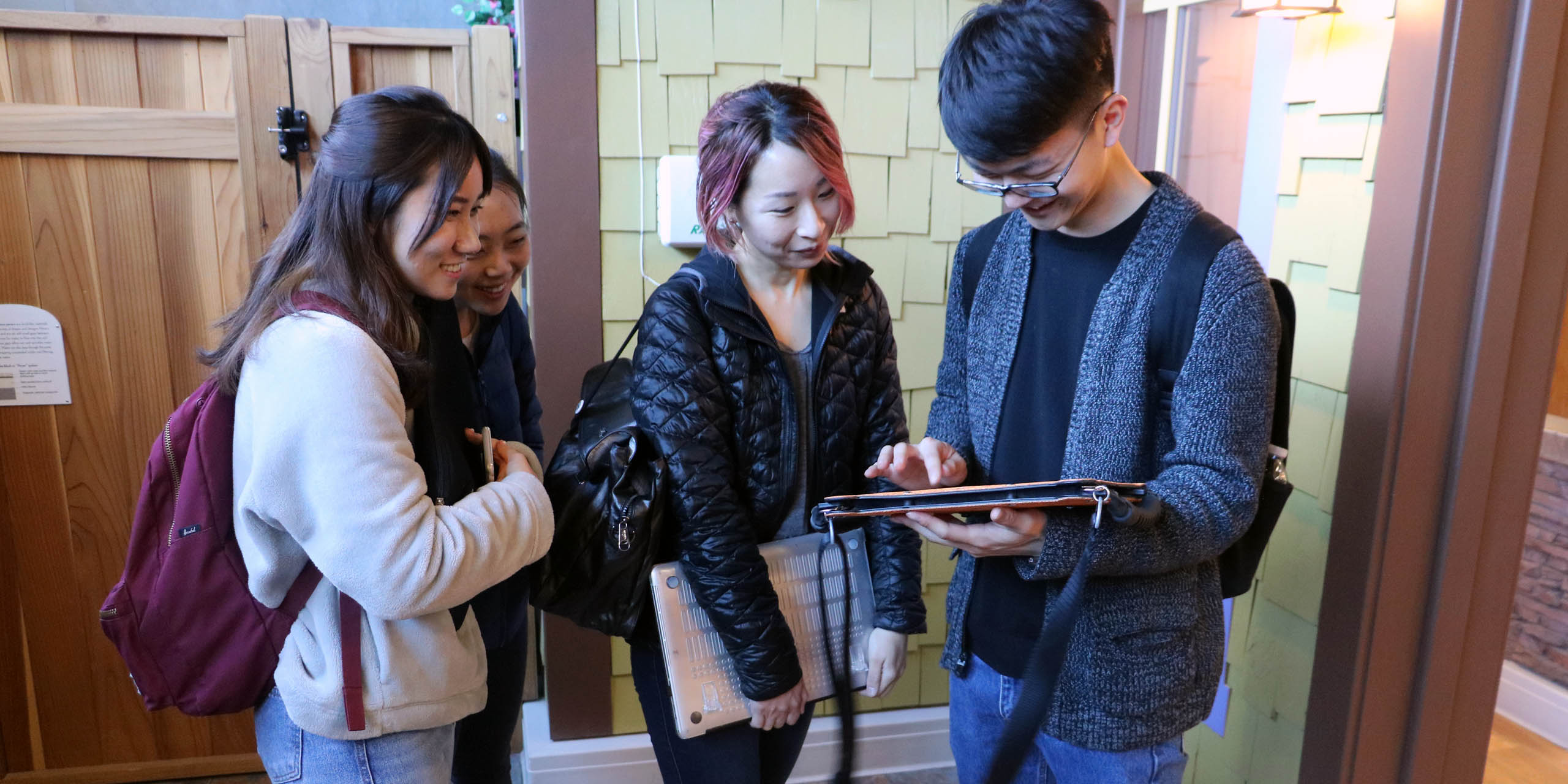
“When each of the team was presenting, I had chills. It really hit me. This is going to happen. We are actually going to deploy these ideas. The vision the students have for each of their projects, it’s going to be implemented. I am so excited to see it come to life.”
– Sarah-Jeanne Salvy, Acting Associate Professor of Medicine, Cedars Sinai
Project Outcomes
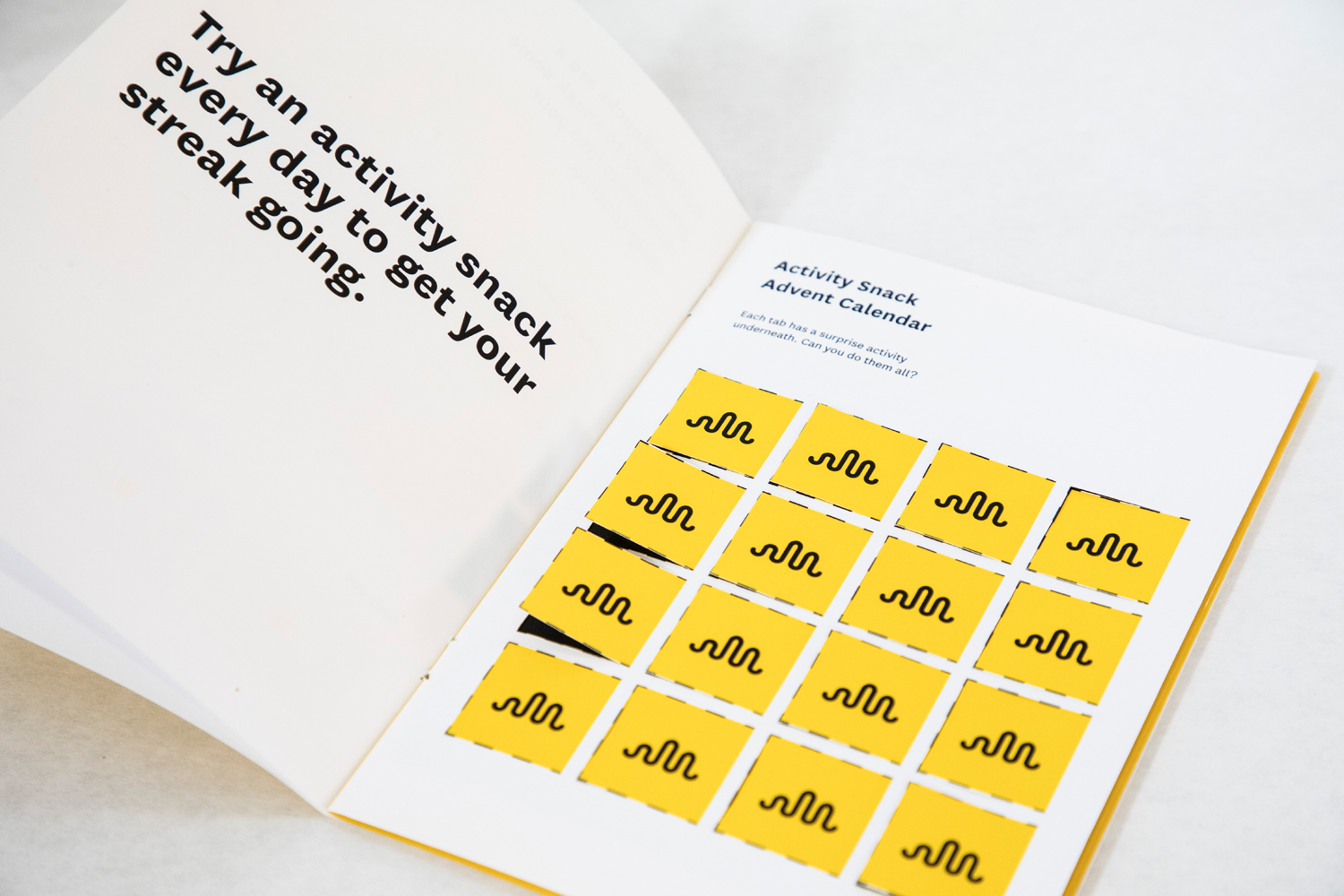 close
close
LAvate
Read moreJordan Guerrero, Pooja Nair, Edwin Tanu, Robin Vane
For young Angelenos with limited time and money, LAvate will encourage a habit of daily activity with an ecosystem of physical and digital nudges, small actions or “activity snacks” that can provide huge health benefits in the long run.
The app features a notification system for a 5-minute workout (sometimes offered live with a celebrity trainer) that can be done anywhere and at any time.
Workout results can be recorded over an extended period of time so users can chart their progress. Additionally, the app has general health and nutritional information from Cedars-Sinai and Discovery Cube.
A pop-up event at a RAP site can feature a mobile truck/van that announces the program, distributes health-monitoring wearables and an accompanying booklet that provides info/coupons for upcoming RAP ongoing events. A low-tech physical nudge would also include select RAP park benches branded as opportunities for fitness.
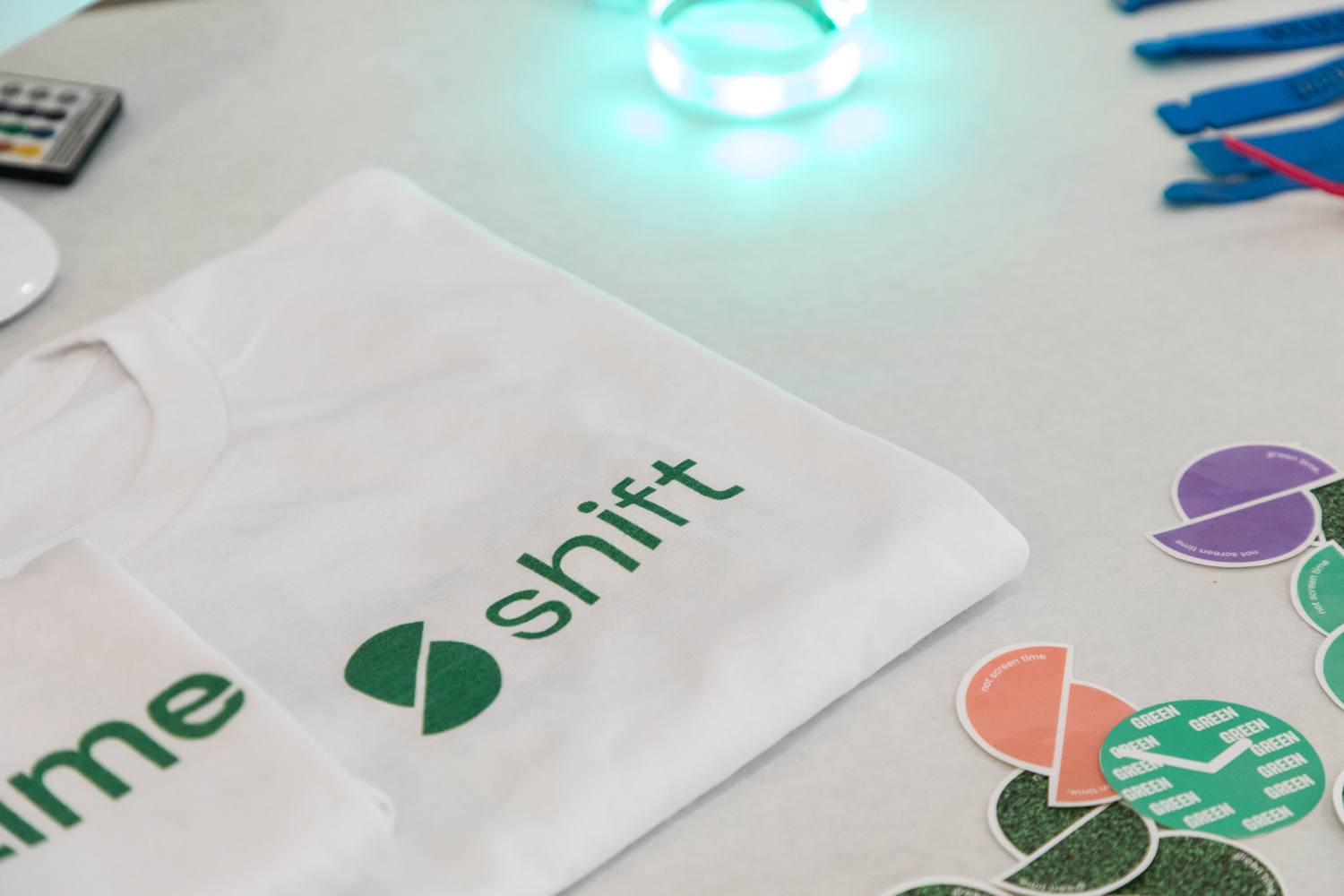 close
close
Shift
Read moreTravis Cantrell, John Ericksen, Nicole Wang
With a goal of “green time, not screen time,” Shift encourages healthy activities by targeting cross generations to participate in active communal experiences where they will engage with family and friends, new and old.
An app notification, presented as a friendly nudge, alerts users of an upcoming physical class or recreation session at their local RAP center; more involved events could include food vendors and/or artist displays as further encouragements to enjoy time outside.
Users will learn of the Shift app and receive a customizable monitoring device at a traveling pop-up event that will take place at numerous locations around Los Angeles.
These free, fun experiences will also introduce Olympic-themed physical challenges using simple modular forms, gym mats and other large toy-like items such as Sumo Suits; inflatables will later be employed. A similar set of challenges will be installed at Discovery Science Cube which will curate the pop-up experience with RAP.
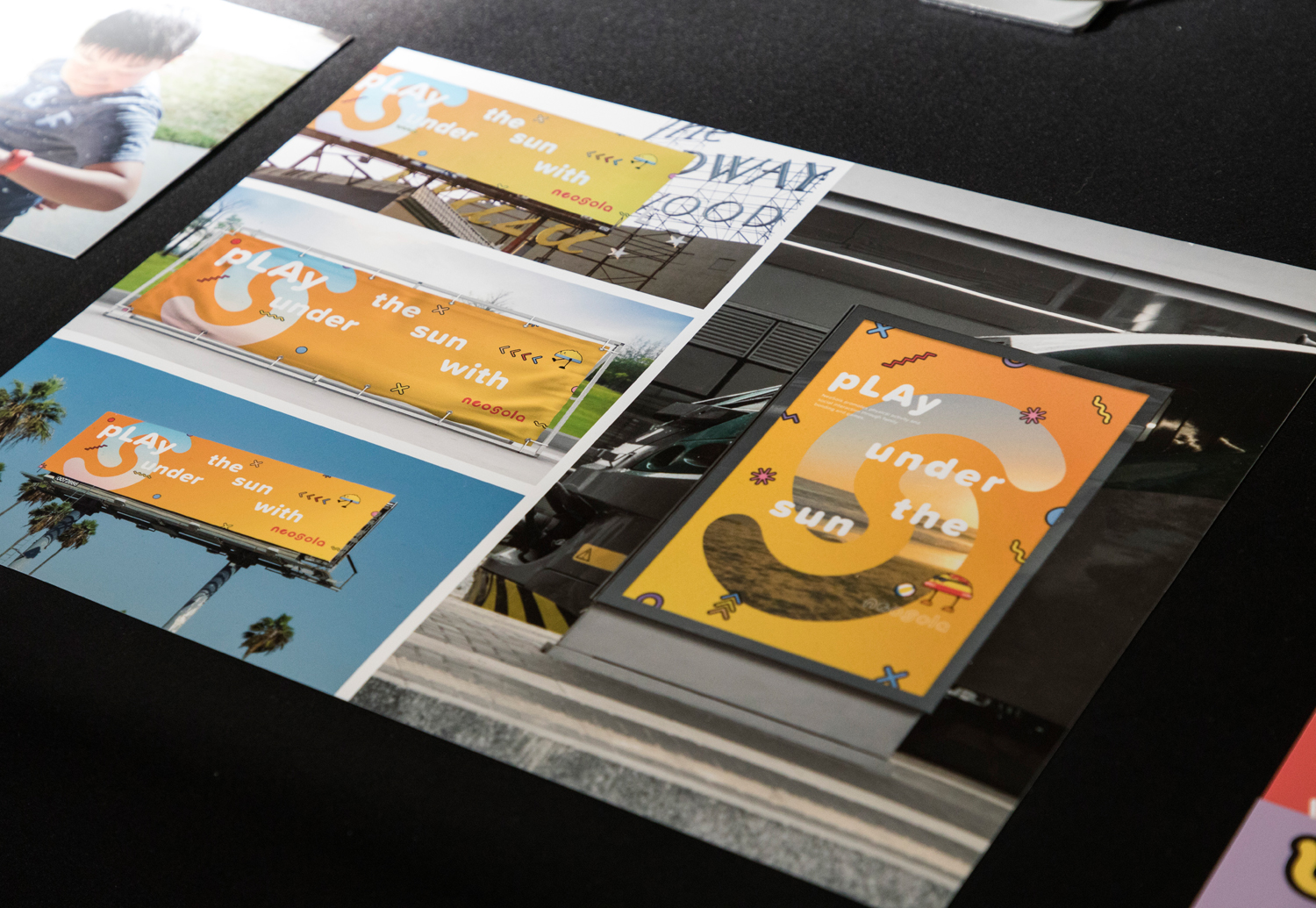 close
close
Neosola
Read moreDiana Chan, Penny Lin, Tian Liu Tang, Toby Yu
Targeting the young generation who are immersed in the digital world of gaming and social media, Neosola (Play Under the Sun) introduces them to inexpensive experiences – many outdoors – that are physically fun and mentally stimulating.
A RFID hub at local RAP centers sends out a QR code for users who download a game to be played; colorful onsite flooring patterns add to the unique play experience.
Users can increase the gaming fun by purchasing a personalized bracelet that also becomes a virtual companion announcing reminders such as “Take Me Outside.” The wearable interacts with exhibits at the Discovery Cube and is connected to a parent’s cell phone which allows them to check up on what and where their children are currently playing.
The health data collecting wearable also becomes a major conduit in the game collection; games can have Olympic themes such as “Pass The Torch” which involves users to touch bracelets as they pass the digital image along.
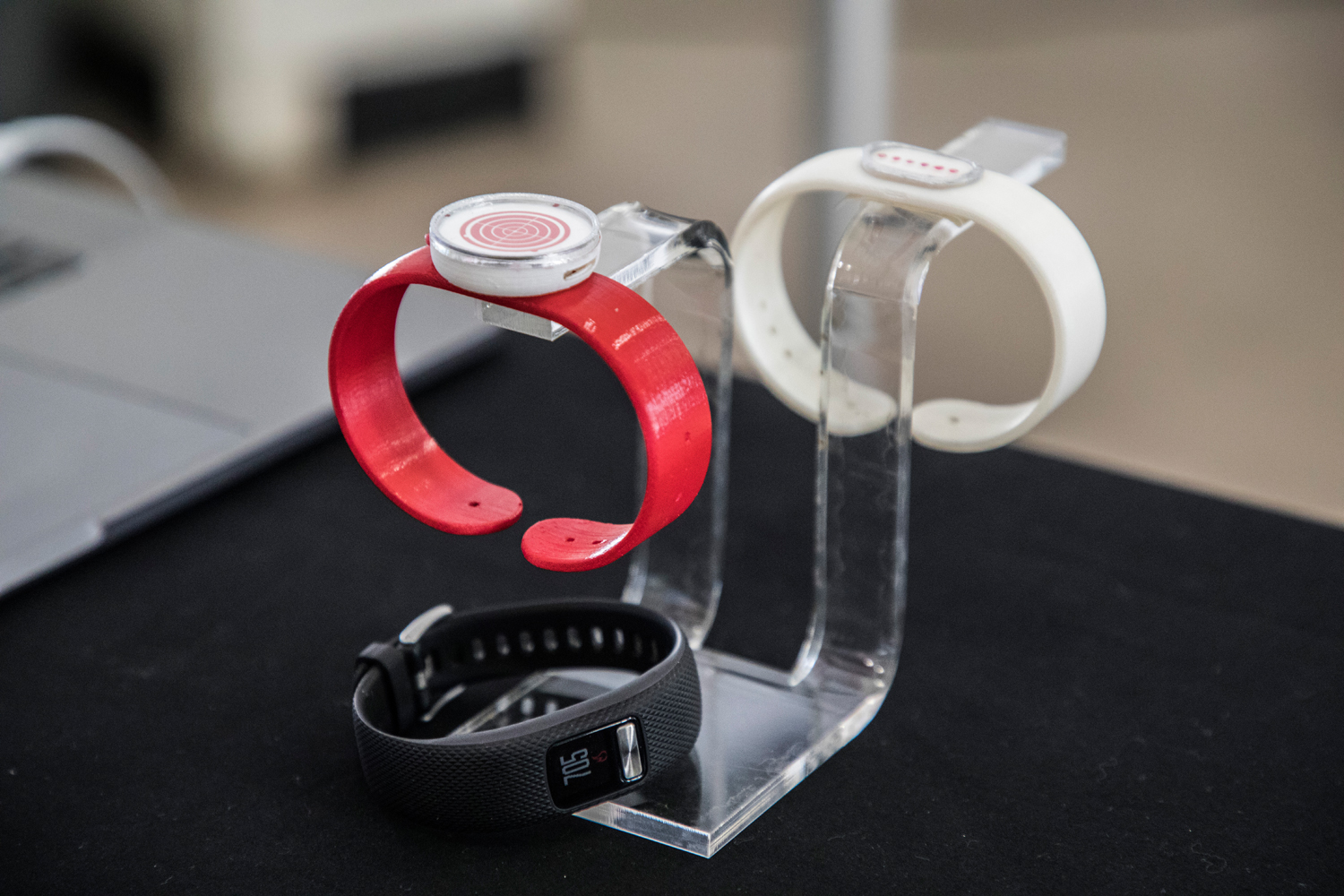 close
close
Compass
Read moreKristy Cheng, Daniel Kim, Yanqi Li, Shiya Zeng
Low-income Los Angeles families can engage in inexpensive activities and easy exercise as they create community through safe and civic-minded events.
The Compass App alerts families about upcoming neighborhood events – many at local RAP centers and free – such as fitness sessions, basketball games and other RAP-sponsored classes/leagues. Local beautification projects that need helping hands will also be announced. Customizable bands will also be in sync with the event notification system.
Families can collect app “badges” for activities to chart their progress and to see habits forming.
Looking ahead, families can use the system to create their own events – e.g. neighborhood tree planting, community clean ups, etc. – and other stakeholders will be able to announce their family-friendly happenings. Additionally, a city-wide Healthy LA Festival featuring deep involvement from stakeholders will also be announced via the system.
 close
close
Orbit
Read moreShixun Chen, Chufan Huang, Aron Park, Wenyuan Xu
Knowing that long-term fitness commitments are problematic with today’s teens, Orbit promotes casual physical activities, healthy social connections and urban discoveries, via a mobile app and health-tracking wristbands that alerts them to engaging events happening throughout Los Angeles, including a new series of summer-themed parties, “LA Summer Nights.”
Taking place at RAP centers, “LA Summer Nights” will feature colorful wall projections of Southern California experiences, with interactions inspired by the Olympic Games. These low-tech immersive surroundings will invite teens to box with a cactus at Joshua Tree National Park, long jump across the stars on Hollywood’s Walk of Fame, or surf Manhattan Beach. Shared social media photos and videos will increase the momentum and interest.
Other Orbit invitations will encourage urban exploration with teen meet-ups at various venues around the city for other sports or game-themed Instragrammable moments.
-
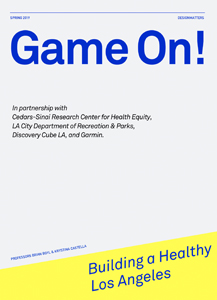
-
Game On! Process Book
The Game On! Process book documents the fourteen week “Game On: Inspiring a Healthy L.A. for 2028” studio in which ArtCenter students explored the role of technology for a city-wide health initiative that aims to engage Los Angeles citizens in healthy activities while helping health researchers effectively gather and analyze data. Students developed apps as well as other technology-based and low-tech solutions for multiple interventions that also provide benefits for additional community stakeholders: the Los Angeles Department of Recreation and Parks (RAP), Discovery Science Cube Los Angeles and Garmin International.
Designed by Eunice Han
Published by Designmatters
Download PDF
“We at RAP are learning that there are a lot of folks out there who can be helpful to our thought process. We are a very old organization. Innovation is something we want to challenge ourselves to embrace if we are going to grow and respond to those we serve. Change happens slowly in the City, so when I see the results of this studio, and the innovation that happened so quickly, it’s just amazing.”
– Ryan Carpio, Director of Government Affairs at City of Los Angeles Department of Recreation and Parks
Next Steps
After the conclusion of this studio, a second Advertising studio was held to design a city-wide campaign to encourage participation in the initiative. A case study with the results of that studio will be shared soon!
Five students from the studios were selected to be part of a Designmatters + LaunchLab Fellowship team, led by faculty Krystina Castella and Robbie Nock, to take forward the most promising concepts from the studios and develop them into a Minimum Viable Product (MVP) that can be rolled out in a pilot study by Cedars-Sinai in early 2020.
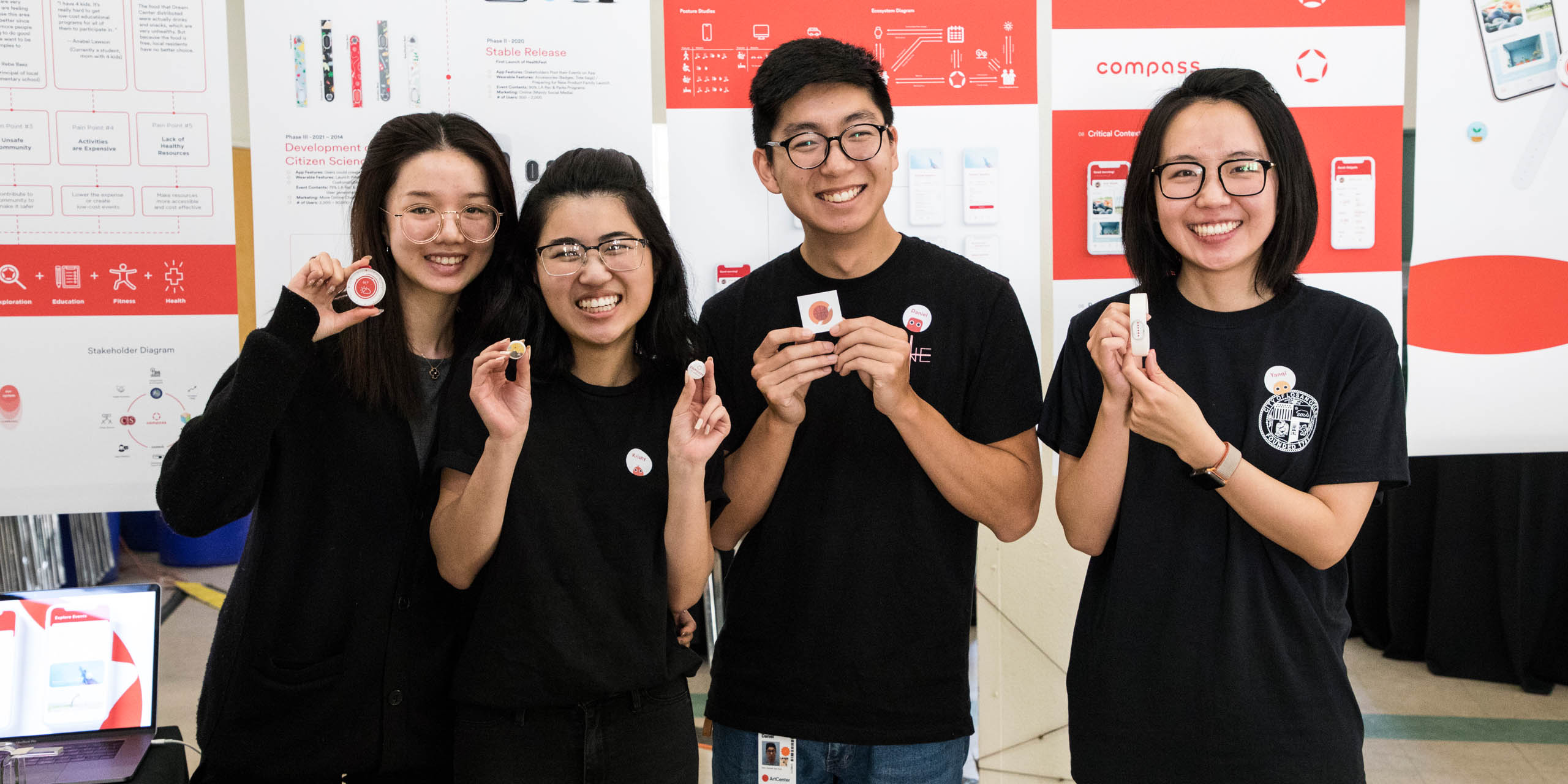
“I’m very excited how our brand is built into their concept because it ultimately means we have the ability to reach an even larger audience by being a part of this project.”
– Sasha Van Voorhis, Director of Discovery Cube LA
